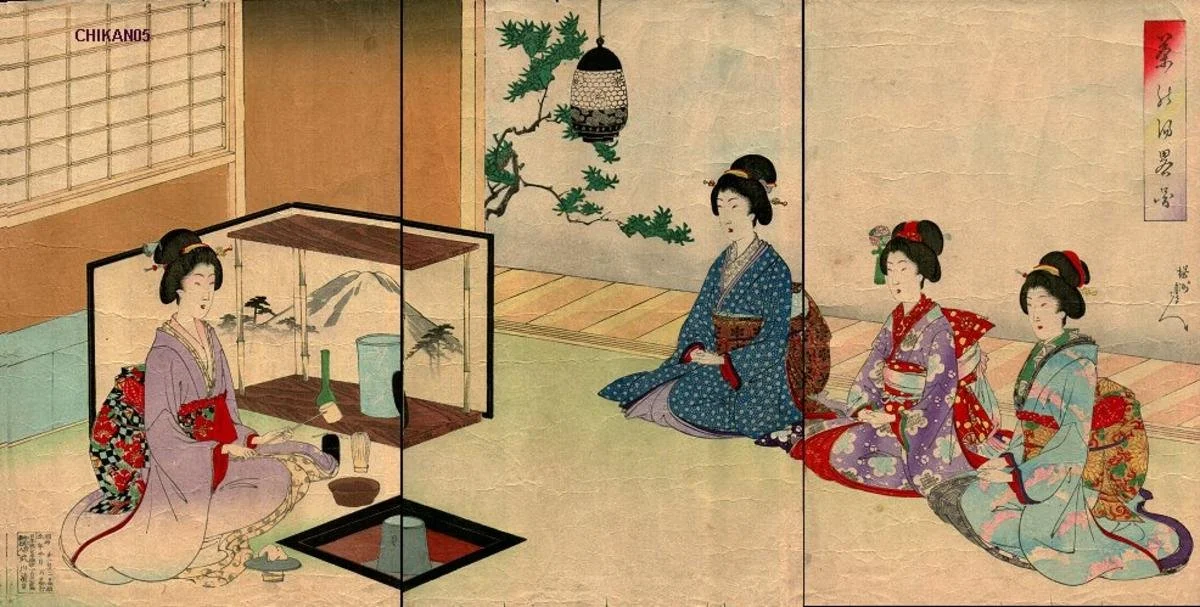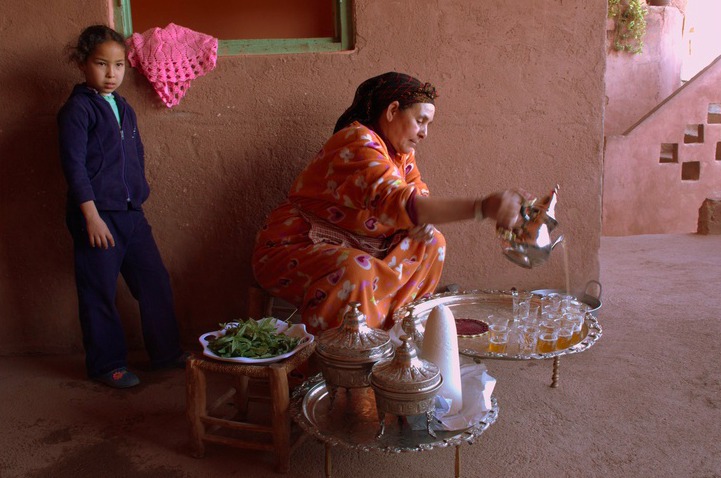Tea as Technology: Returning to Sacred Stillness
Growing up in South Central Los Angeles, I was immersed in Nigerian culture of all types. I was blessed with the opportunity to explore food, music and many aspects of ceremony. One of the overlooked and often misunderstood aspects of Nigerian culture speaks to the human relationship with time. Weddings and funerals alike were not centered around the Western or Eurocentric notions of being “on schedule” or being “on time”. These ceremonies sometimes began hours later than was initially anticipated and nearly all attendees were aware and engaged with this reality accordingly. Colonized notions of time served as suggestions more than regulations. When I inquired about my experience, my mother explained that ancestral wisdom teaches us to be present wherever we are. Preparation for the ceremony is an experience in itself. Sharing time in conversation with others and feeling “carried away” or “losing track of time” is evidence of the urgency of that moment and serves as a reminder to be fully immersed in it. Ancestral notions of time leave little room for self restriction around life’s inherent abundance and pleasure.
Tea ceremonies are an ancient practice that can be identified globally. The rituals and tools associated with ceremonies are regionally specific and incorporate many traditional details, but maintain deep gratitude for experiences of stillness. According to Chinese folklore, tea was first worked with as early as 2737 BCE. While a royal herbalist was preparing water for the emperor, the wind carried some leaves into the boiling water creating the first tea-like infusion. Chinese history also documents the use of different kinds of herbal teas for medicinal purposes. There are two kinds of Chinese tea, dancha; tea compressed into a brick-like shape and tencha; powdered matcha. While tencha was explored by Buddhist monks in China and Japan, many forms of dancha were exported to Senegal, Morocco, Algeria, Libya and other areas of Northwestern Africa.
Winter Tea Ceremony by Toyohara Chikanobu
Sadō: Tea Ceremony in Japan
As one of the first beneficiaries of Chinese tea culture, Buddhist monks in Japan cultivated conditions for the farming and harvesting of various herbs. From this relationship, monks developed seasonal and ceremonial rituals that heavily centered or incorporated the spiritual aspects of tea. Participants in tea ceremonies are asked to follow detailed procedures to ensure they can fully embody the energies and intentions of the experience. All aspects of the ceremony are held at ground level. For this reason, participants are careful to ensure they step only on the appropriate tatami (floor mats), while wearing new tabi (toe socks). The venue is decorated with a kakejiku (hanging scroll) that, through simple calligraphy, speaks to important philosophical truths about the season and occasion for participant reflection. Chabana; floral arrangements specifically for tea ceremonies are also central to the space. These arrangements are mindfully curated from the floral abundance available during that season. Ceremony guidelines include routines for thinner or thicker teas, light or full meals and varying durations. Every aspect of the experience carries deep intentionality requiring participants to be extremely mindful and present.
Atay B’Naa-Naa: Tea Ceremony in Morocco
The arrival of tea in what is now called Maghreb, Northwestern Africa, predates colonial rule in the region. Tea has long served the Indigenous people of Morocco as both a symbol of hospitality and a tool for self-regulation. Atay Naa-Naa is green tea made from Chinese pearl tea infused with mint and sugar. It is served throughout the day and required upon the arrival of a guest. For many, this includes during the deliberation of financial business or trade. There are so many beautiful ways tea serves as a form of communication. The length of a pour indicates how pleased a host is with your presence. Extremely high pours become a precise artistic practice devoted to communal body language. Tea ceremonies are a tradition for every class in Morocco and honor a much more relaxed ancestral pace.
Recipe
Using a medium sized pot, bring water to a boil
Clean and rinse your teapot and add green tea to the teapot
Pour boiling water over the tea and allow tea leaves to steep for one to two minutes
Discard water in teapot
Add mint leaves, sugar and two cups of boiling water
Steep infusion for five minutes, gently stir infusion and serve
Ingredients
4 cups of water
3 to 4 tablespoons sugar
1 tablespoon pearl green tea
1 large fresh handful of spearmint leaves
Attaya: Tea Ceremony in Senegal
Attaya is served throughout the day for every reason in Senegal. Tea ceremonies carry a rich spiritual depth in their symbolism. The practice begins with friends sharing lewel, the first glass. More sugar and mint are added to the infusion before the community partakes in naarel, the second glass of tea. Nettel, the third round follows more fresh ingredients being added to the mixture. The three tier experience is meant to symbolize the stages of life; beginning with the bitterness of early lessons and childhood initiations, into the bittersweetness of our midlife, love and family and ending with the tremendous sweetness of old age. In different contexts, the symbolism can also represent the sweet aging of friendships. The process of moving the tea between kas (serving cup) and kettle while cooking and serving creates a thick foam that indicates host satisfaction, alongside high pours.
Walo Garden c/o CREATE!
Recipe
Lay out four small cups (60 to 75 mL each)
Disperse four to five tablespoons of tea across the cups
Boil water for fifteen minutes and add sugar
Pour water into tea cups to generate a thick foam
Pour infusion from cups back into pot and bring to boil
Add fresh mint leaves and pour into kas (serving cups)
Ingredients
3 cups of sugar
4 cups of water
4 small cups (60 to 75 mL each)
4 to 5 tablespoons pearl green tea
1 large handful of fresh spearmint leaves
In all of these traditions and many others it is considered extremely rude to refuse participation in a tea ceremony. In the Western world, slowing down is a rejected practice making it extremely difficult for Black people to honor the ancestral abundance available to us through practices like tea ceremonies and others. For these reasons, the reclamation of CPT (colored people time) and resonant experiences like shootin’ shit on the porch and sharing time in the community (“loitering”) act in resistance to the attempts the West makes to colonize our souls. So, I definitely think we should do more of that — relax to resist.
Crenshaw Car Show by Sir Fredric Films
Thumbnail by Becca Mathias




